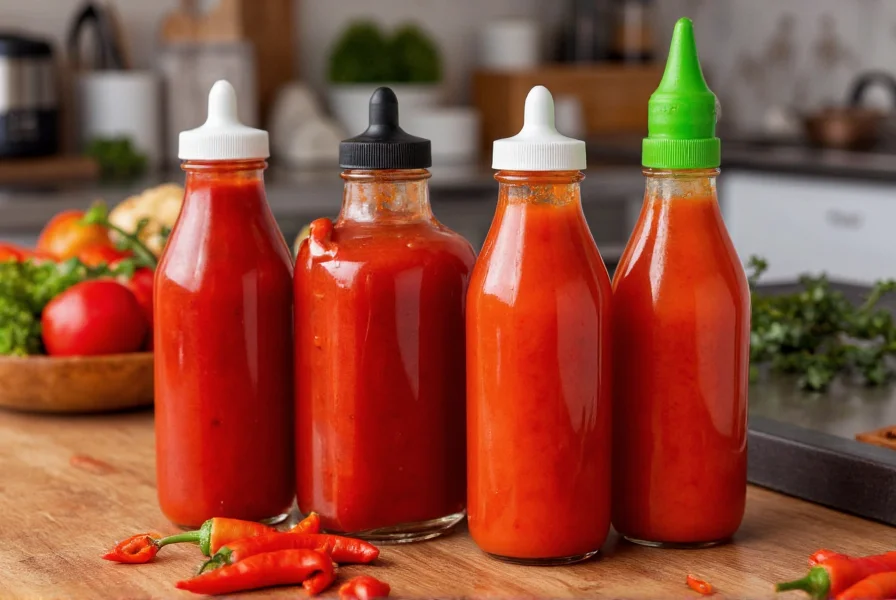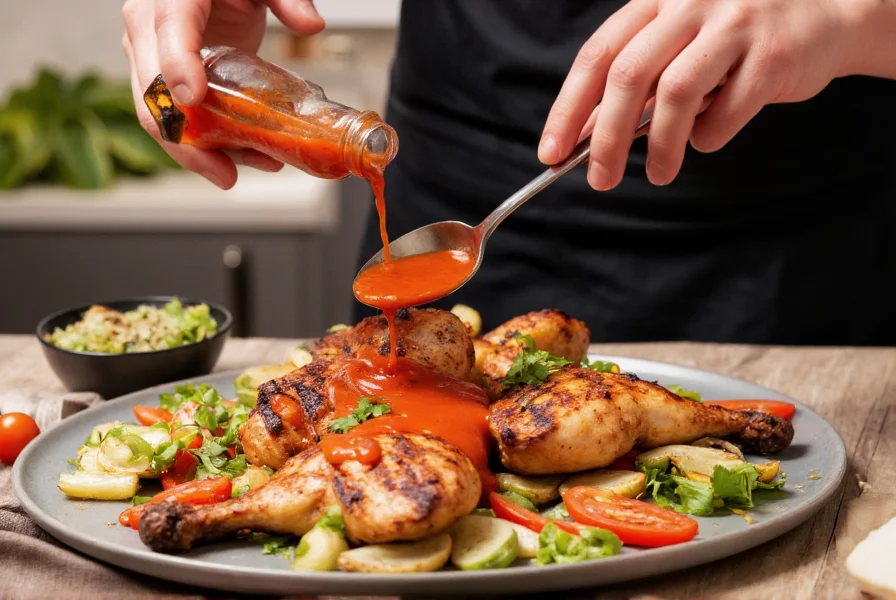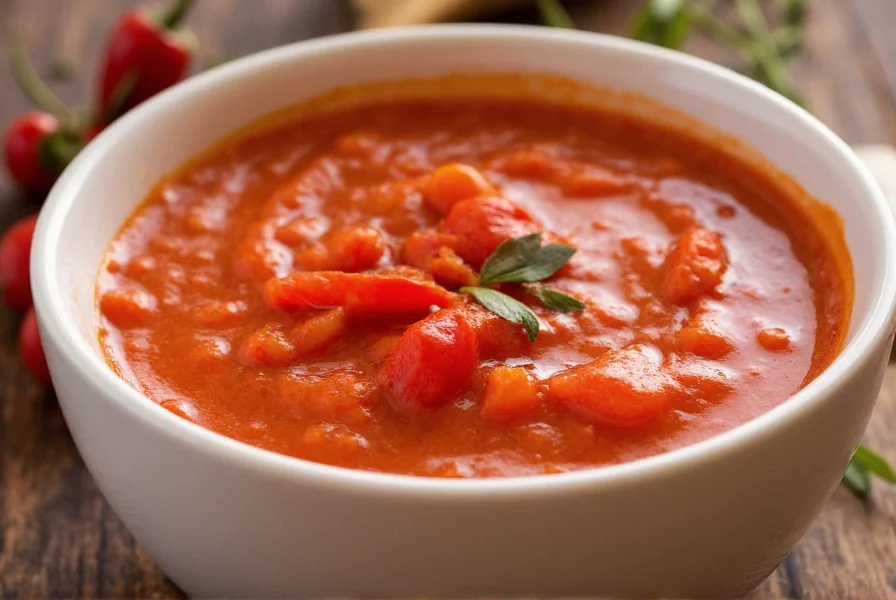When exploring red pepper sauce varieties, understanding their core components helps you select the perfect option for your culinary needs. This essential kitchen staple enhances dishes with both heat and complex flavor profiles that go beyond simple spiciness.
Origins and Evolution of Red Pepper Sauce
The history of red pepper sauce traces back centuries to regions where chili peppers naturally thrived. Indigenous cultures in Central and South America first developed early versions using native pepper varieties. As global trade expanded, these fiery condiments spread worldwide, adapting to local tastes and ingredients. By the 19th century, commercial production began in places like Louisiana, where authentic Louisiana red pepper sauce became a regional specialty using locally grown cayenne peppers.

Key Ingredients and Variations
All red pepper sauces share basic components but differ significantly in preparation and additional ingredients:
| Sauce Type | Primary Peppers | Distinctive Ingredients | Heat Level (Scoville) |
|---|---|---|---|
| Classic Louisiana | Cayenne | Vinegar, salt | 2,000-5,000 |
| Sriracha | Red jalapeño | Garlic, sugar, xanthan gum | 1,000-2,200 |
| Tabasco | Tabasco peppers | Vinegar, salt, aged in barrels | 2,500-5,000 |
| Harissa | Bird's eye chili | Garlic, cumin, coriander, olive oil | 4,000-10,000 |
Understanding these red pepper sauce ingredients helps explain why certain varieties work better for specific dishes. The vinegar content affects both preservation and tanginess, while sugar balances heat in many modern formulations.
Heat Levels and the Scoville Scale
The Scoville scale measures chili pepper heat intensity, crucial for selecting the right red pepper sauce heat levels for your tolerance and recipe requirements. Most commercial red pepper sauces range from 500 to 10,000 Scoville Heat Units (SHU):
- Mild sauces (500-2,500 SHU): Ideal for beginners or dishes where heat shouldn't dominate
- Medium sauces (2,500-15,000 SHU): Most versatile for everyday cooking
- Hot sauces (15,000-50,000 SHU): For those seeking significant heat
- Extreme sauces (50,000+ SHU): Specialized use only
When determining how to use red pepper sauce in cooking, remember that heat perception varies based on individual tolerance and the food it's paired with. Dairy products and sugars can counteract excessive heat if needed.
Culinary Applications and Pairing Suggestions
Red pepper sauce shines in numerous culinary applications beyond simple condiment use. For breakfast dishes, a few drops enhances scrambled eggs or avocado toast without overwhelming other flavors. In Asian cuisine, it complements stir-fries and noodle dishes beautifully. The best red pepper sauce for eggs typically features moderate heat with garlic notes.
Chefs recommend these pairings:
- Seafood: Mild Louisiana-style with fish tacos or shrimp
- Eggs: Sriracha-based sauces for scrambled or deviled eggs
- Barbecue: Traditional cayenne-based sauces with grilled meats
- Vegetables: Thinned with citrus for roasted vegetable drizzle

Homemade vs. Commercial Red Pepper Sauce
Creating homemade red pepper sauce recipe versions allows complete control over ingredients and heat level. Basic preparation involves blending roasted peppers with vinegar, salt, and optional flavor enhancers, then simmering and bottling. The process takes 1-2 hours but yields a fresher-tasting product without preservatives.
Commercial varieties offer convenience and consistent quality. When selecting store-bought options, check ingredient lists for artificial additives and excessive preservatives. High-quality commercial sauces typically contain only peppers, vinegar, salt, and minimal additional ingredients.
Storage and Shelf Life Considerations
Proper storage tips for red pepper sauce ensure maximum freshness and safety. Unopened commercial bottles remain stable for 1-2 years in a cool, dark place. Once opened, refrigeration extends shelf life to 6-12 months. Homemade versions without preservatives require refrigeration and last 1-2 months.
Signs of spoilage include:
- Mold growth on the surface
- Significant color change (beyond natural settling)
- Foul odor
- Bulging lid (indicating fermentation or contamination)
Understanding Regional Variations
The difference between red pepper sauce and hot sauce often comes down to regional terminology and specific formulations. In many contexts, the terms are used interchangeably, though "hot sauce" generally refers to a broader category that includes both red and green varieties.
Distinct regional styles include:
- Mexican: Often features arbol or piquin peppers with citrus notes
- Caribbean: Scotch bonnet-based with tropical fruit additions
- Asian: Frequently includes garlic and sugar for balanced heat
- American South: Vinegar-forward cayenne pepper sauces
Practical Usage Tips for Home Cooks
When incorporating red pepper sauce into recipes, start with small amounts and adjust to taste. The heat intensifies as dishes cook, so add gradually. For consistent results in how to use red pepper sauce in cooking, measure rather than eyeball additions.
Creative applications include:
- Marinades: Combine with oil, citrus, and herbs
- Dips: Mix with mayonnaise or yogurt for spicy spreads
- Dressings: Whisk with olive oil and vinegar for salads
- Baking: Small amounts enhance chocolate desserts
Frequently Asked Questions
What's the difference between red pepper sauce and hot sauce?
Red pepper sauce specifically refers to sauces made from red chili peppers, while hot sauce is a broader category that includes sauces made from various colored peppers. Most red pepper sauces are hot sauces, but not all hot sauces are red (some use green peppers). The terms are often used interchangeably in casual conversation.
Can I substitute red pepper sauce for cayenne pepper?
Yes, but with adjustments. One teaspoon of cayenne pepper equals approximately 1-2 tablespoons of most red pepper sauces, depending on the sauce's concentration. Remember that liquid sauces add moisture to recipes, so you may need to reduce other liquids slightly when substituting.
Why does my red pepper sauce separate?
Separation occurs naturally in sauces without emulsifiers. The vinegar and oil components separate over time. This is normal and not a sign of spoilage. Simply shake the bottle well before use to recombine the ingredients. Commercial sauces often contain xanthan gum to prevent separation.
Are there mild red pepper sauce options for those sensitive to heat?
Yes, several mild options exist. Look for sauces made with Anaheim or poblano peppers instead of cayenne. Some brands specifically label mild varieties, typically ranging from 500-1,500 Scoville units. You can also dilute stronger sauces with vinegar, citrus juice, or honey to reduce the heat level while maintaining flavor.
How can I reduce the heat if I've added too much red pepper sauce?
To counter excessive heat, add dairy products like yogurt or sour cream, which contain casein that binds to capsaicin. Acidic components like lime juice or vinegar can also help balance heat. Sugar or honey provides counterbalance, while additional base ingredients (more vegetables, meat, or grains) dilute the overall spiciness without changing flavor profile significantly.











 浙公网安备
33010002000092号
浙公网安备
33010002000092号 浙B2-20120091-4
浙B2-20120091-4